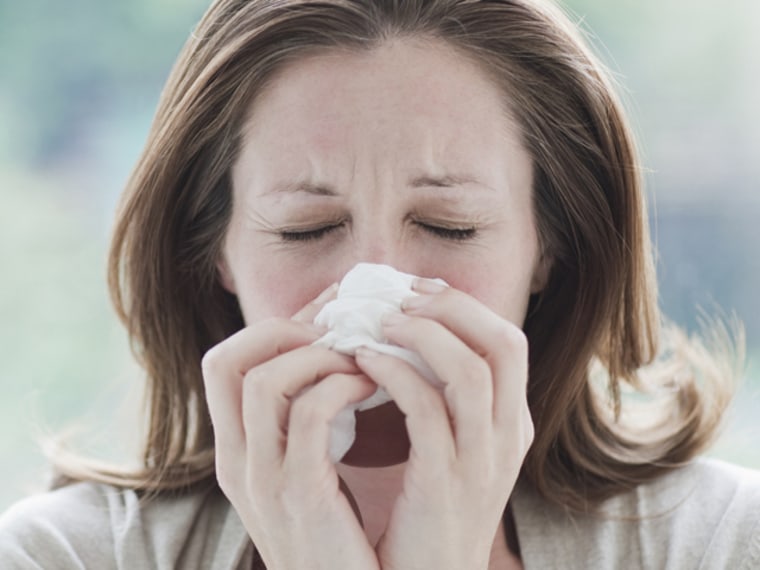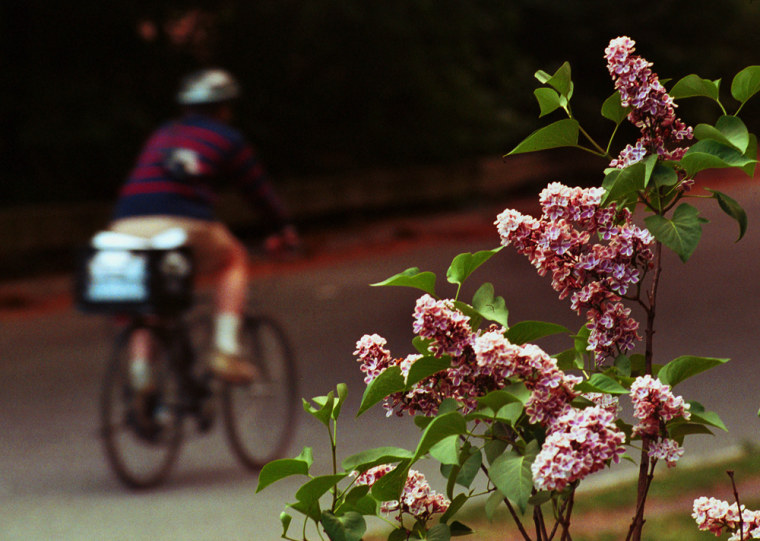
If you feel hay fever has been starting earlier and lasting longer, you’re correct. The severe winter weather experienced by most of the country this year is helping turn this spring into one of the toughest allergy seasons ever.
“While trees are dormant in the colder months, the wet weather — rain, snow and ice — is absorbed by the trees and makes them flourish,” says Dr. Stanley M. Fineman, past president of the American College of Allergy, Asthma and Immunology (ACAAI) and in private practice with the Atlanta Allergy & Asthma Clinic in Marietta, Ga. “So when the warmer weather rolls around, it signals for the trees to release the pollen, and they’re going to be ready.”
Dr. Ravi Gutta, head of Allergy Clinics at University of California, Irvine, firmly believes 2014 will be one of the most difficult seasons on record.
“The main reason why allergies are becoming more prevalent is because of the changes caused by global warming,” Gutta says. “Not only has there been an increase in the release of pollen, but the pollen itself is more allergenic, more potent. These two factors play a role in terms of increasing the intensity of symptoms in patients.”
A long-term study conducted by Rutgers University released last year reported that tree season in New Jersey has “been creeping up in length about a half day for the past 20 years” due to climate change. This study also referenced separate research that found a correlation between “seasonal warming and a longer ragweed season in some parts of central North America.”
Fluctuating temperatures in between seasons creates a phenomenon called the priming effect, Fineman says. At the beginning of allergy season, symptoms will surface for an allergy sufferer. Then, if temperatures drop into the freezing digits again, the pollen will disappear temporarily. When it returns and this person is re-exposed to the pollen again in the same season, they can have an even more violent reaction to the allergen.
“It’s called the priming effect because the patient is primed to have a stronger reaction from the subsequent exposure than from the earlier exposure,” Fineman says.
How bad this season will be depends on different factors, says Fineman. “If you judge it by total pollen count, we’ve seen seasons that have already had higher pollen counts," he says. "If you’re answering this question based on how soon the allergy season starts, at least in Atlanta, we had seen over 900 tree pollen counts in mid-March, which is very significant.”
Contrary to popular belief, everything that blooms during this time of year will not trigger common springtime allergy symptoms — sneezing, itchy nose and watery eyes.
According to data from the American Academy of Allergy, Asthma & Immunology (AAAAI), bright, colorful flowers are unlikely culprits since their sweet scents attract insects that transfer the large waxy pollen from plant to plant via their bodies.
However, the trees and plants that are “ignored” by the insects (due to their lack of smell) and rely on the wind to carry the powder-like pollen tend to cause the most allergic reactions.
Finding relief
An allergy is the body’s immune system responding to a foreign, usually harmless substance. In the case of seasonal allergic rhinitis (the fancy name for hay fever), the allergen is pollen, the male fertilizing agent of flowering plants, trees, grasses and weeds.
When it comes to treatments, antihistamines and decongestants are the traditional over the counter methods, while allergy shots are the most common prescription recommended by doctors.
The latest “good and very effective” medicine on the market today, according to Fineman, is an over-the-counter nasal steroid.
Recently, the U.S. Food and Drug Administration approved Oralair, the first sublingual (under the tongue) treatment for certain grass pollen allergies.
Whether you’re suffering from mild or severe allergies, make sure to wear a mask when spending time outdoors, says Dr. James Sublett, managing partner of Family Allergy and Asthma in Louisville, Kentucky and president-elect of the ACAAI. “We recommend a National Institute of Occupational Safety and Health (NIOSH) rated N95 level filter mask that can be used to reduce exposure to the dust and pollen particles, which can be irritating to the respiratory tract.”
One of the most popular terms during this time of year is pollen count, which is a measure of a quantity of air over a 24-hour period, says Fineman.
Since the pollen count differs each day — pollen is higher on windy and humid days and lower on rainy and cooler days — he advises allergy sufferers to check the pollen count each morning so they can take extra precaution.
Two reputable sources include the National Allergy Bureau (NAB) — which is associated with the AAAAI — and The Weather Channel, which projects a two-day “Pollen Hotspot” forecast.
